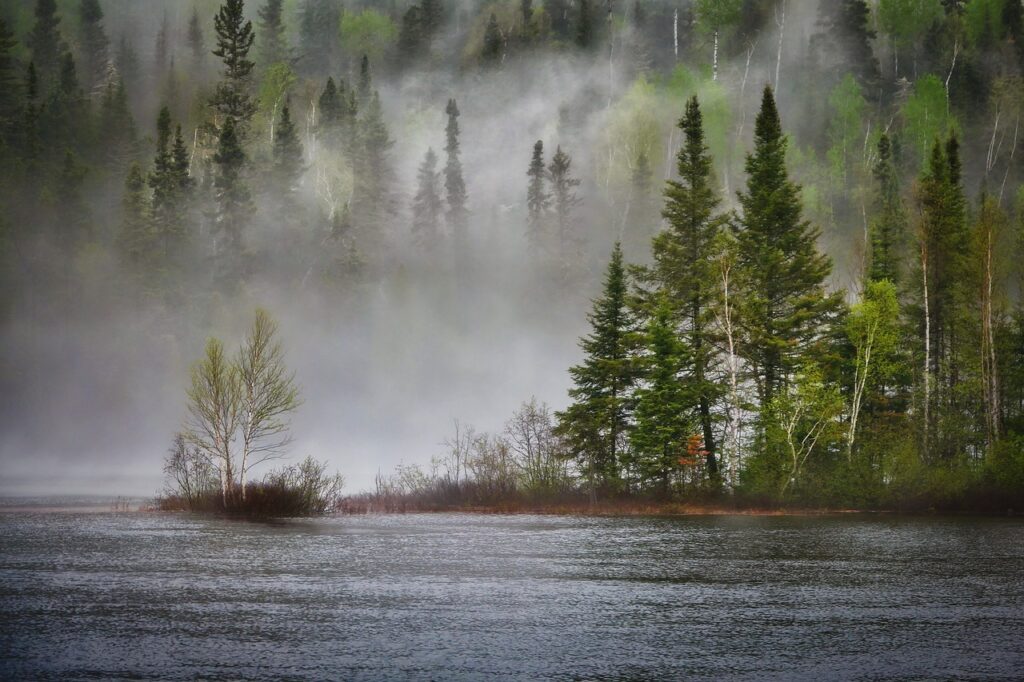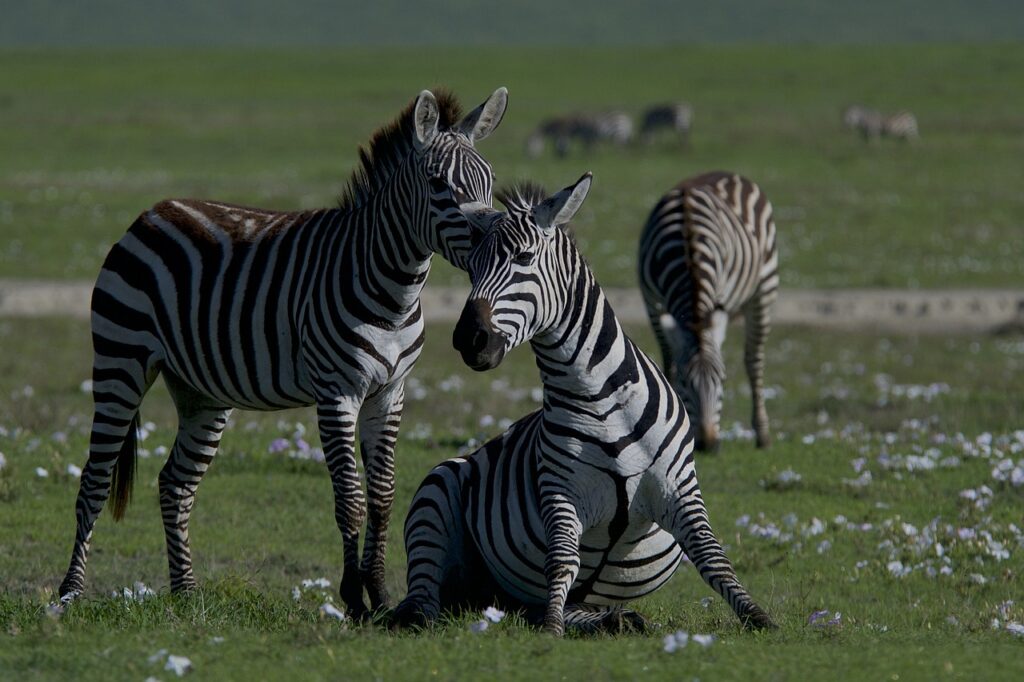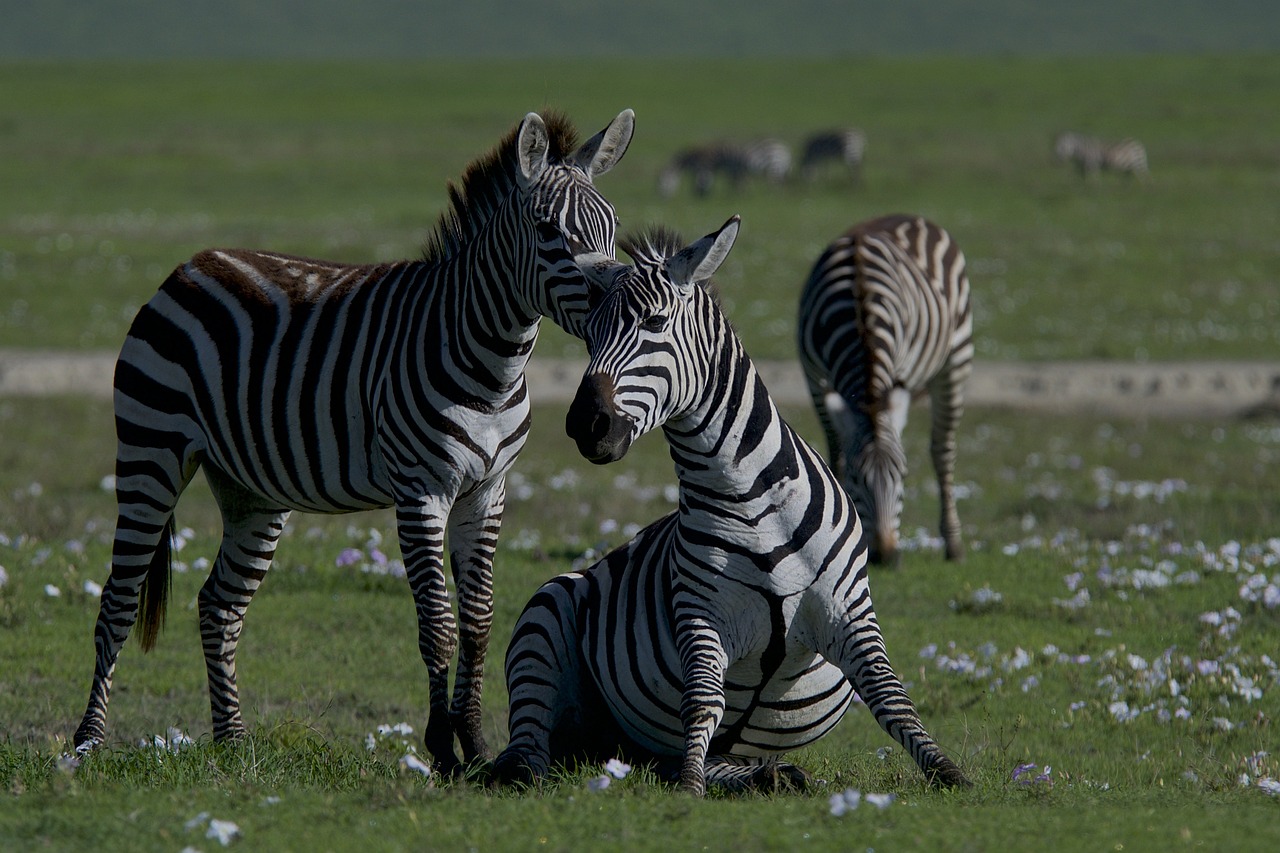Biodiversity, the incredible variety of life that exists on our planet, is facing numerous threats that are jeopardizing its very existence. From habitat destruction and fragmentation to overexploitation and climate change, these factors are causing a significant decline in the diversity of species and ecosystems worldwide. In this article, we explore the main threats that biodiversity currently faces, shedding light on the urgent need for conservation efforts to protect the delicate balance of life on Earth.

Habitat Loss
Deforestation
Deforestation is a significant threat to biodiversity worldwide. It involves the clearing of forests and woodlands, typically for the purposes of agriculture, infrastructure development, or urbanization. As trees are removed, countless species lose their homes and sources of food. It not only disrupts the delicate balance of ecosystems but also leads to the loss of various plant and animal species that rely on forest habitats for survival.
What Are The Main Threats To Biodiversity?
Urbanization
The rapid growth of urban areas is another major contributor to habitat loss. As cities expand, natural habitats such as forests, grasslands, and wetlands are often destroyed to make way for roads, buildings, and other infrastructure. The fragmentation of habitats caused by urban development poses a serious threat to many species that require large areas of intact habitat to thrive. Urban areas also introduce new stressors, such as pollution and habitat destruction, which can further degrade the ecosystems surrounding cities.
Expansion of Agriculture
The expansion of agricultural activities is a significant driver of habitat loss, particularly in areas with high biodiversity. Forests, grasslands, and other natural habitats are cleared to make room for monoculture crops or livestock production. This conversion reduces the available habitat for many species and disrupts ecological processes. It can also lead to the degradation of soils, water resources, and the loss of genetic diversity within plant and animal populations.
Infrastructure Development
The development of infrastructure, including roads, dams, and mines, can have severe impacts on biodiversity. Construction work often requires clearing large areas of land, leading to the destruction and fragmentation of natural habitats. Infrastructure projects can also disrupt migration routes, isolate populations of species, and introduce pollution and invasive species into previously undisturbed ecosystems. The resulting loss and fragmentation of habitats can have far-reaching consequences for biodiversity.
Climate Change
Global warming
Global warming, primarily driven by increasing greenhouse gas emissions, poses a significant threat to biodiversity. Rising temperatures can alter ecosystems, disrupt the distribution of species, and shift the timing of key ecological events such as flowering and migration. Many species are already experiencing changes in their behavior and distribution in response to warming temperatures, which can lead to mismatches with their food sources and breeding grounds. Some species may be unable to adapt or migrate fast enough to survive in their changing habitats, leading to population declines and even extinction.
Extreme weather events
Climate change is also associated with an increase in extreme weather events such as hurricanes, droughts, floods, and wildfires. These events can have devastating impacts on ecosystems and the species that rely on them. For instance, intense storms can destroy the physical structures of habitats, such as coral reefs and mangroves, which provide vital shelter and breeding grounds for many marine species. Likewise, wildfires can destroy vast areas of forests, leaving behind degraded landscapes that are less suitable for many plants and animals.
Sea-level rise
As global temperatures rise, glaciers and ice sheets melt, leading to a rise in sea levels. This poses a significant threat to coastal ecosystems and the species that inhabit them. Coastal habitats such as mangroves, salt marshes, and coral reefs provide critical protection against storm surges and support a high diversity of species. However, as sea levels rise, these habitats are at risk of being flooded and eroded, resulting in the loss of valuable habitat and increased vulnerability to storms for both marine and terrestrial species.
Ocean acidification
Increasing carbon dioxide (CO2) emissions caused by human activities are not only contributing to global warming but also leading to ocean acidification. The excess CO2 in the atmosphere is absorbed by the ocean, leading to a decrease in pH levels. This acidification poses a significant threat to marine life, particularly organisms with calcium carbonate shells or skeletons, such as corals, shellfish, and some plankton species. The reduced availability of carbonate ions can impede the growth and development of these organisms, potentially leading to the collapse of entire marine food webs.

Invasive Species
Introduction of non-native species
The intentional or accidental introduction of non-native species into new environments can have detrimental effects on native biodiversity. These non-native species, often referred to as invasive species, can outcompete native species for resources such as food, water, and shelter. They may also have no natural predators or diseases in their new environment, allowing them to multiply rapidly and dominate ecosystems. This displacement of native species by invasive ones can lead to reduced biodiversity and changes in the overall functioning of ecosystems.
Overpopulation of non-native species
Once established in a new environment, some non-native species can undergo explosive population growth due to the absence of natural controls. Without predators or diseases to keep their numbers in check, these invasive species can multiply rapidly and outcompete native species for resources. This can disrupt the delicate balance of ecosystems and lead to the decline or extinction of native species that are unable to effectively compete with the invasive species.
Competition for resources
Invasive species often compete with native species for limited resources such as food, nesting sites, and breeding areas. This competition can put additional pressure on native species already facing habitat loss or other threats. Native species may struggle to find adequate resources, leading to reduced reproductive success and population declines. Moreover, in some cases, invasive species may have a broader diet or be voracious predators, causing a decline in native species.
Predation on native species
Some invasive species can also prey on native species, further exacerbating the threats to biodiversity. These predators can disrupt the delicate balance of predator-prey relationships, leading to the decline or local extinction of native species. The absence of natural defenses or adaptations to cope with the new predator can make native species particularly vulnerable. Invasive predators can have cascading effects on ecosystems by altering the abundance and behavior of native species, sometimes leading to significant changes in ecosystem structure and function.
Pollution
Air pollution
Air pollution, predominantly caused by the burning of fossil fuels and industrial activities, has profound impacts on biodiversity. Particulate matter, toxins, and gases emitted into the atmosphere can negatively affect the health and survival of many plants and animals. Air pollution can lead to acid rain, which damages forests, lakes, and other ecosystems, affecting the species that rely on them. It can also contribute to the formation of smog, reducing visibility and impairing the respiratory systems of both terrestrial and aquatic organisms.
Water pollution
Water pollution is a widespread problem that affects both freshwater and marine ecosystems. Industrial and agricultural runoff, sewage discharge, and improper waste disposal contribute to high levels of pollutants in water bodies. These pollutants can harm aquatic organisms directly or indirectly. For example, excessive nutrient runoff can lead to algal blooms, which deplete oxygen levels in water and harm fish and other organisms. Chemical contaminants can accumulate in the tissues of aquatic animals, leading to reproductive impairments, behavioral changes, and even death.
Soil contamination
Soil contamination occurs when pollutants such as heavy metals, pesticides, and industrial chemicals accumulate in soils. These contaminants can come from various sources, including agricultural practices, industrial activities, and improper waste disposal. Soil contamination can have detrimental effects on the growth and survival of plants, as well as the organisms that depend on them. Contaminated soils can limit the availability of nutrients, disrupt the soil food web, and lead to the accumulation of toxic substances in the tissues of plants and animals.
Noise pollution
Noise pollution, primarily caused by human activities such as transportation and industrial operations, can have significant impacts on wildlife. Many species rely on acoustic signals for communication, navigation, and finding prey or mates. Excessive noise can interfere with these vital behaviors, leading to reduced reproductive success, altered migration patterns, and increased stress levels. Noise pollution can disrupt the natural balance of ecosystems and potentially drive away or harm sensitive species.

Overexploitation
Overfishing
Overfishing occurs when fish are harvested from oceans, lakes, and rivers faster than they can reproduce. The demand for seafood, coupled with advancements in fishing technology, has resulted in the depletion of many fish populations worldwide. Overfishing disrupts marine food webs, as the removal of certain species can have cascading effects on the rest of the ecosystem. It can also lead to the collapse of commercially valuable fish stocks, threatening the livelihoods of fishing communities and the availability of seafood as a food source.
Illegal hunting and poaching
Illegal hunting and poaching of wildlife for their meat, fur, tusks, or other body parts is a widespread and highly destructive practice. It affects a wide range of species, from iconic mammals like elephants and rhinoceroses to endangered birds and reptiles. The demand for these animal products, often driven by illegal wildlife trade, puts immense pressure on vulnerable populations, pushing many species to the brink of extinction. The loss of these species disrupts ecological processes and can have cascading effects on other species within their ecosystems.
Illegal wildlife trade
The illegal wildlife trade ranks as one of the most lucrative illicit activities globally, posing a severe threat to biodiversity. It involves the illegal capture, sale, and transportation of plants and animals, often for the exotic pet trade, traditional medicine, or luxury goods. Species targeted by the illegal wildlife trade range from small reptiles and birds to large mammals, including endangered species like tigers and pangolins. This trade not only directly impacts the populations of these species but also fuels organized crime, corruption, and further habitat destruction.
Overharvesting of resources
Overharvesting refers to the unsustainable extraction or collection of resources from ecosystems, including timber, medicinal plants, and non-timber forest products. When resources are harvested faster than they can regenerate, it can lead to depletion and degradation of the natural resources and the ecosystems that support them. Overharvesting can have dire consequences for both the species directly targeted and the wider ecosystem. It can disrupt ecological processes, alter habitat structure, and threaten the livelihoods of communities dependent on these resources.
In conclusion, biodiversity faces a multitude of threats that jeopardize the delicate balance of ecosystems and the survival of countless species. Habitat loss, driven by deforestation, urbanization, and agricultural expansion, remains a significant contributor to biodiversity decline. Climate change, with its accompanying global warming, extreme weather events, sea-level rise, and ocean acidification, poses additional challenges for species trying to adapt to rapidly changing conditions. The introduction, overpopulation, competition, and predation of invasive species can disrupt ecosystems and outcompete native species. Pollution, including air and water pollution, as well as soil contamination and noise pollution, negatively impact the health and survival of various organisms. Lastly, overexploitation, such as overfishing, illegal hunting and poaching, illegal wildlife trade, and overharvesting of resources, further erodes biodiversity and threatens the livelihoods of communities dependent on these resources.
To safeguard biodiversity, it is essential to address these threats collectively. Conservation efforts must focus on protecting and restoring habitats, implementing sustainable land-use practices, and promoting responsible development and infrastructure planning. Additionally, reducing greenhouse gas emissions to mitigate climate change impacts is vital. Measures to prevent the introduction and spread of invasive species should be implemented, and efforts to control and eradicate existing invasive populations should be prioritized. Furthermore, curbing pollution through stricter regulations and sustainable practices is crucial. Finally, adopting sustainable harvesting practices and strengthening law enforcement against illegal activities are essential for preventing overexploitation and preserving biodiversity for future generations. Only through a holistic approach and collective action can we effectively protect biodiversity and ensure the long-term survival of our planet’s incredible array of species.




